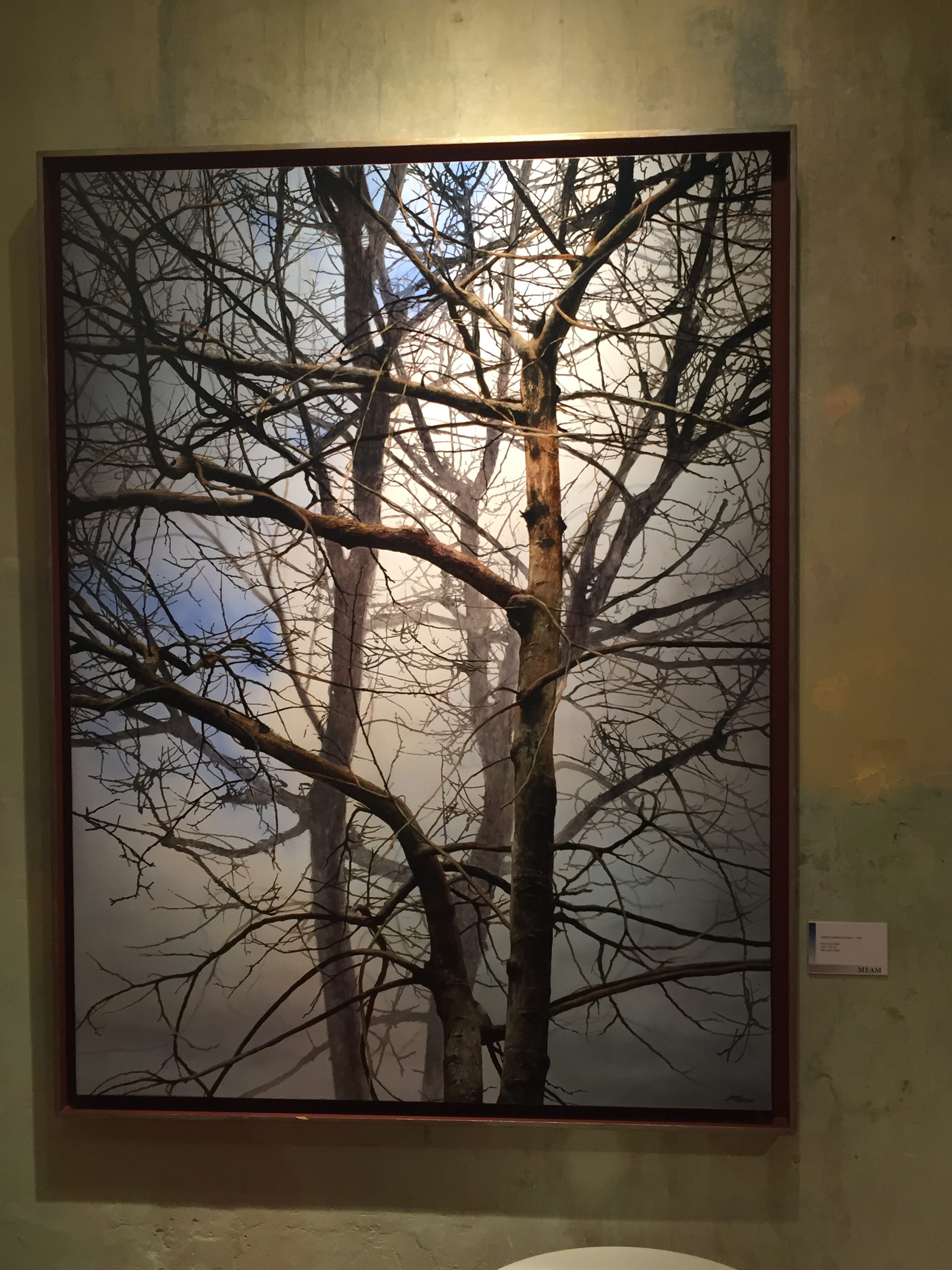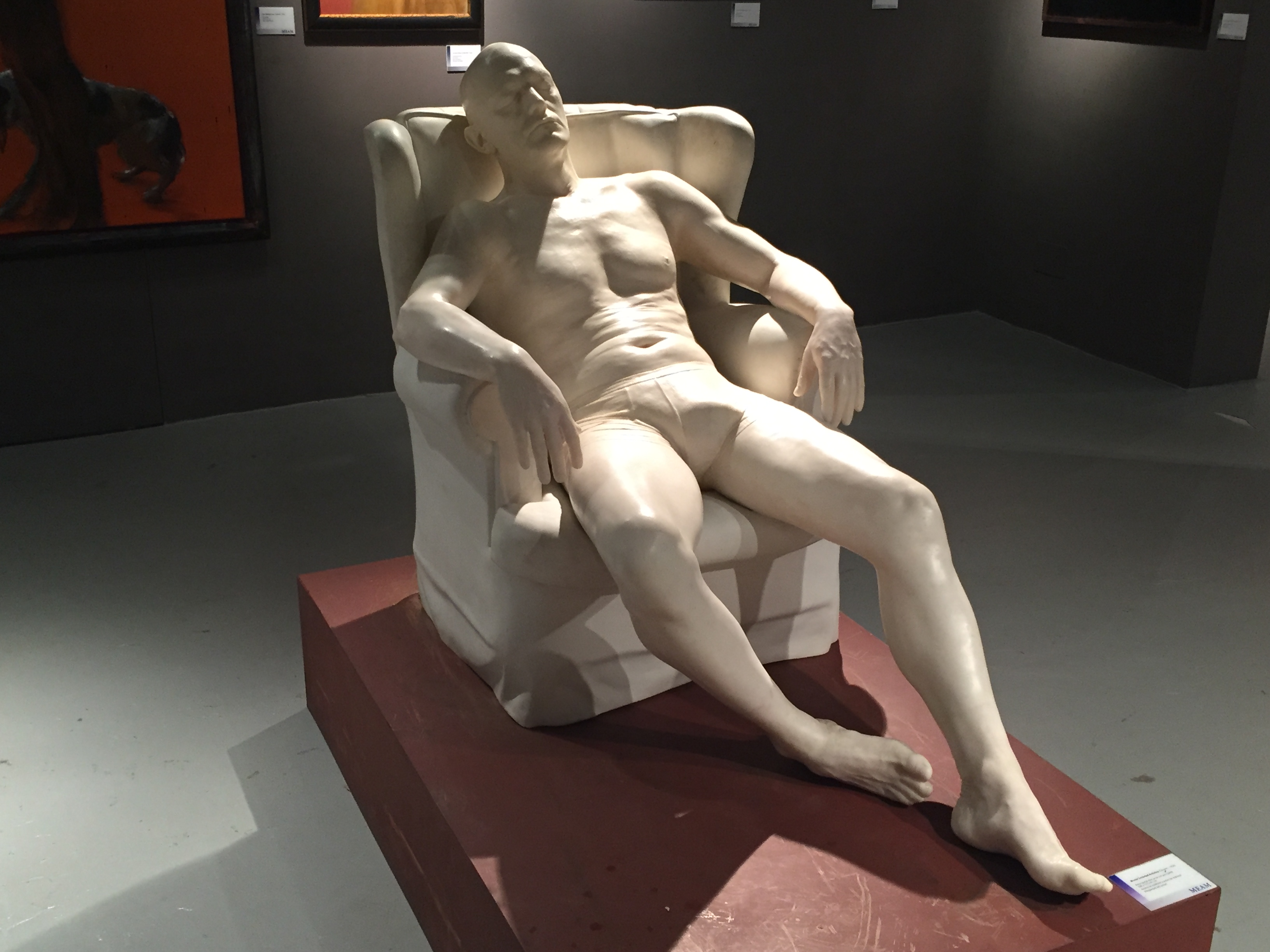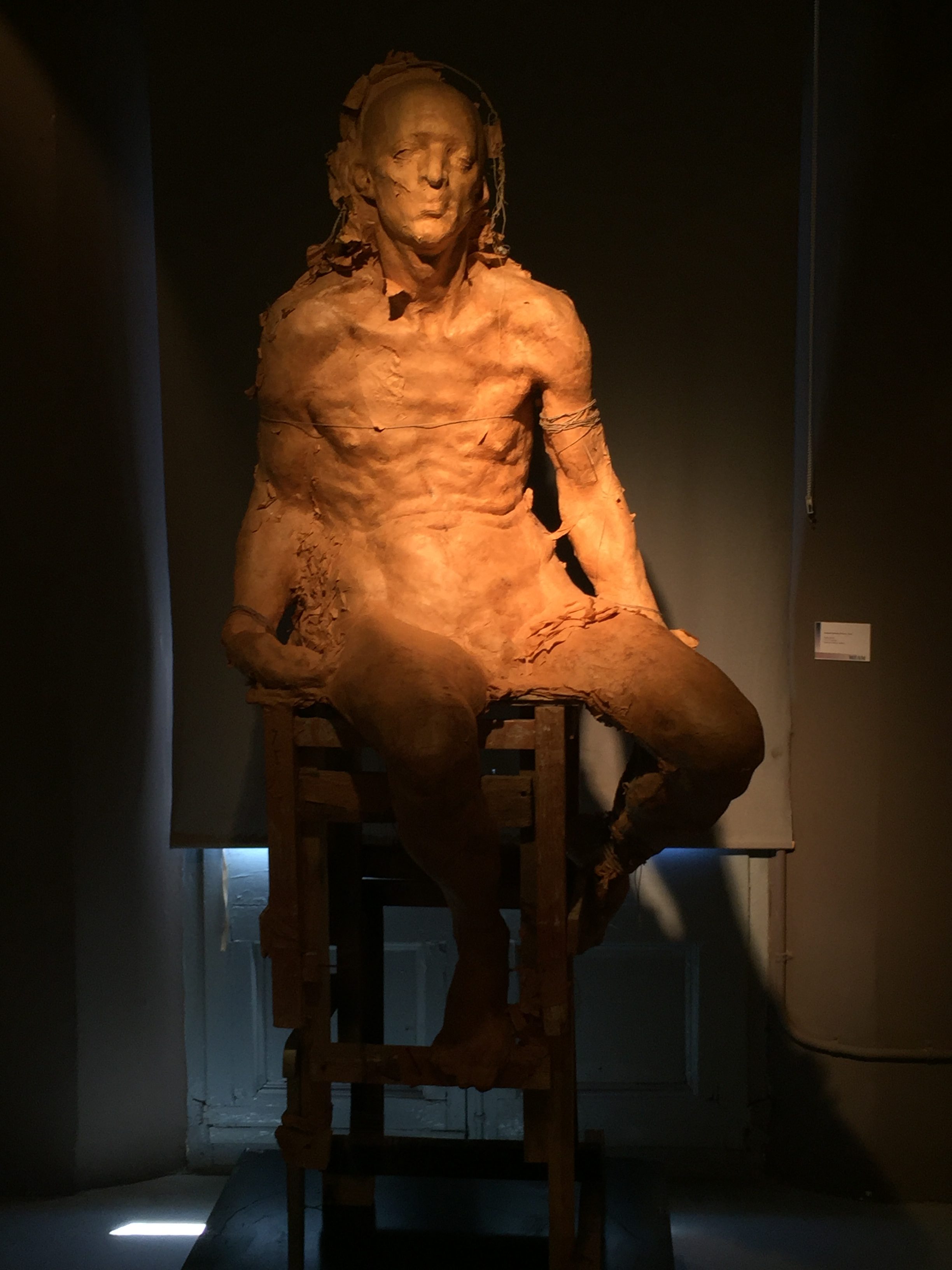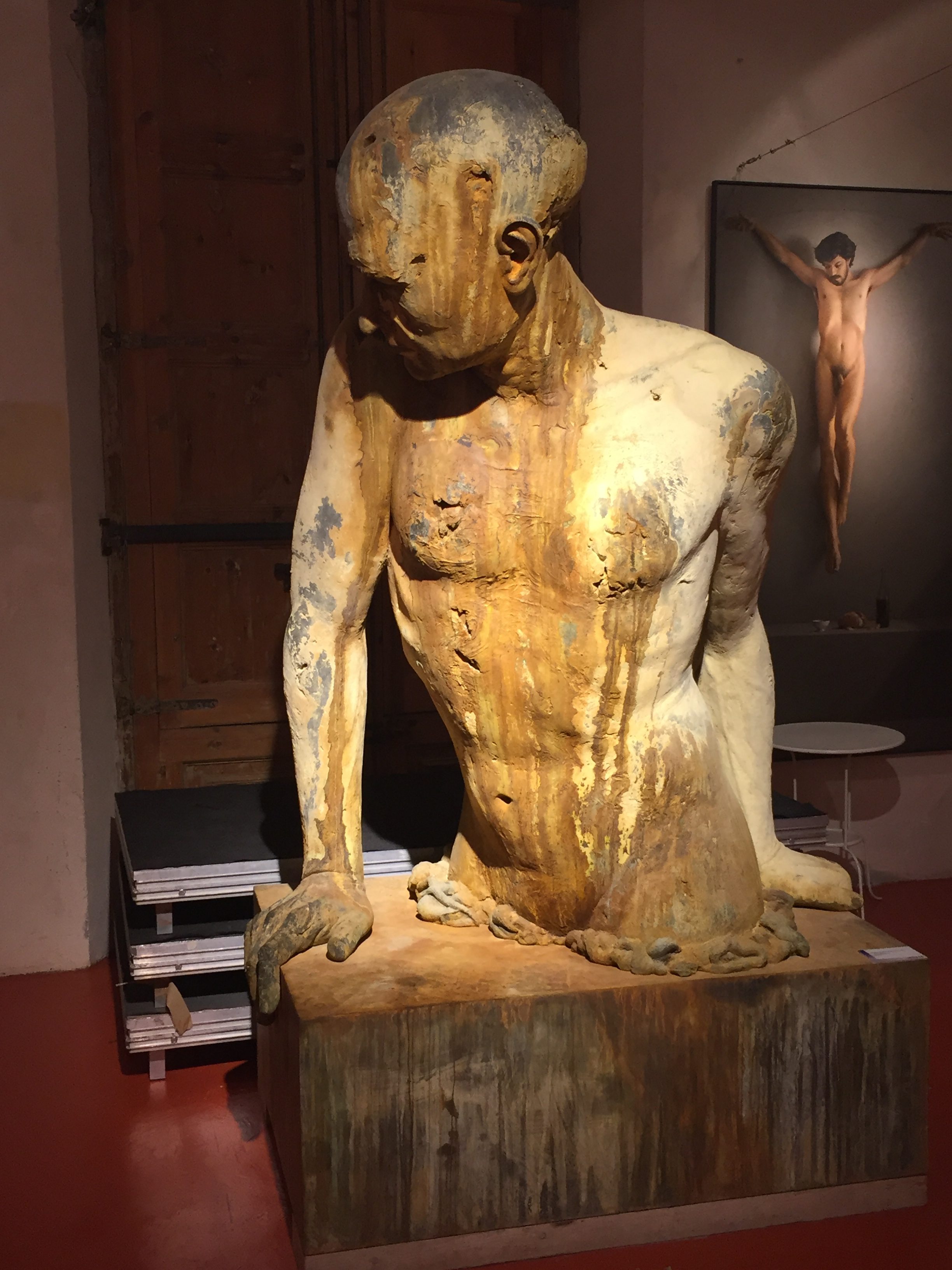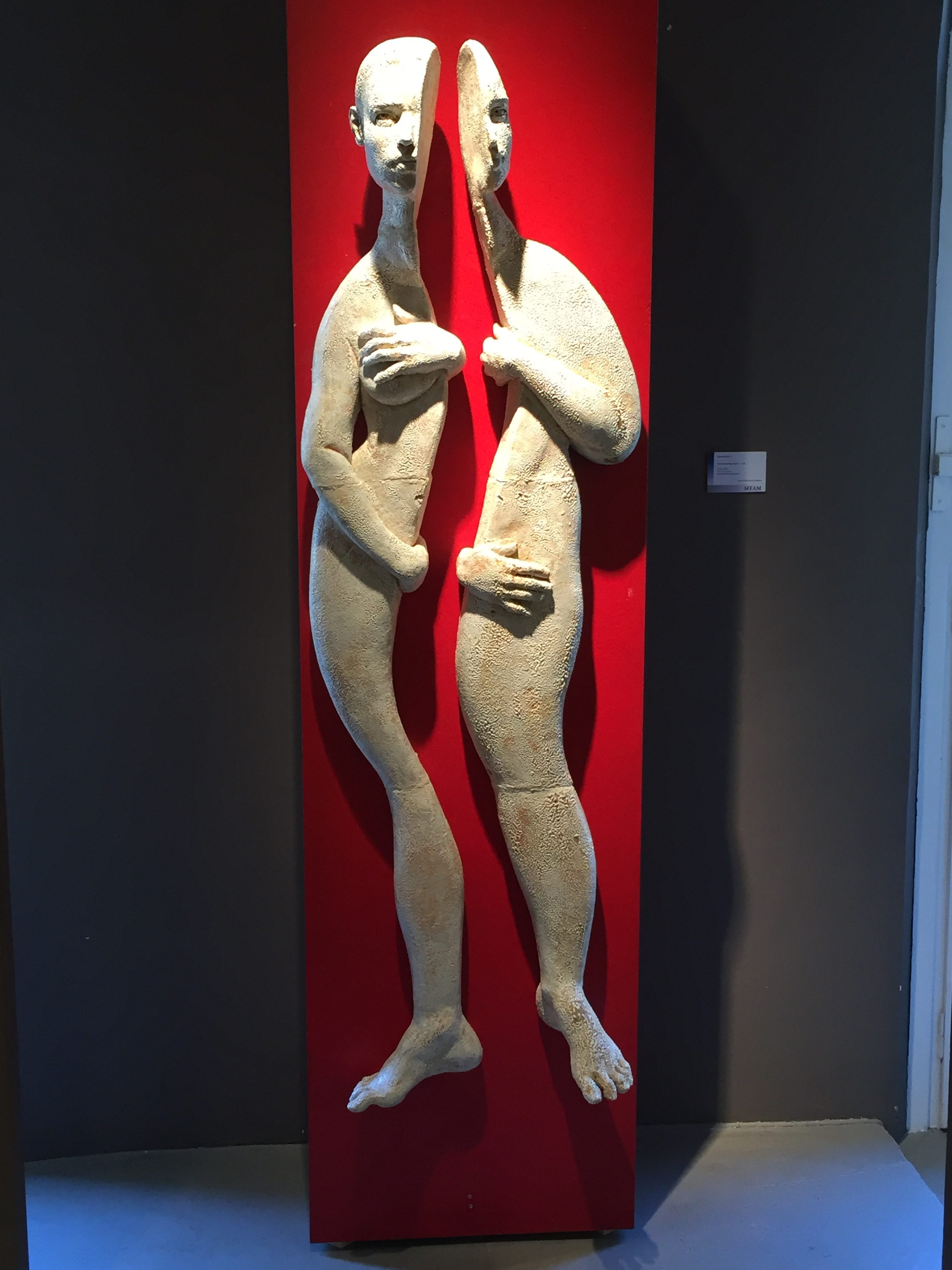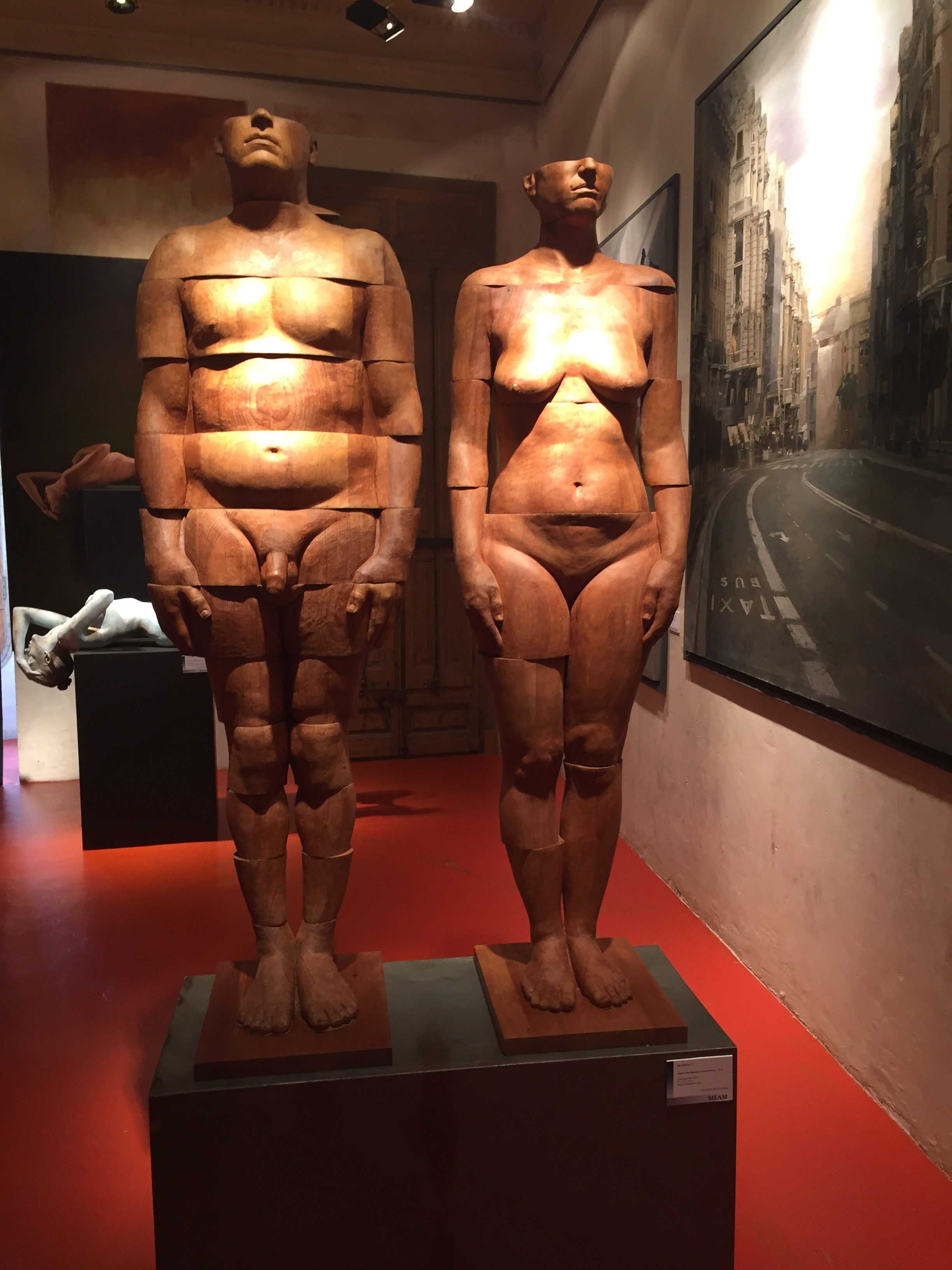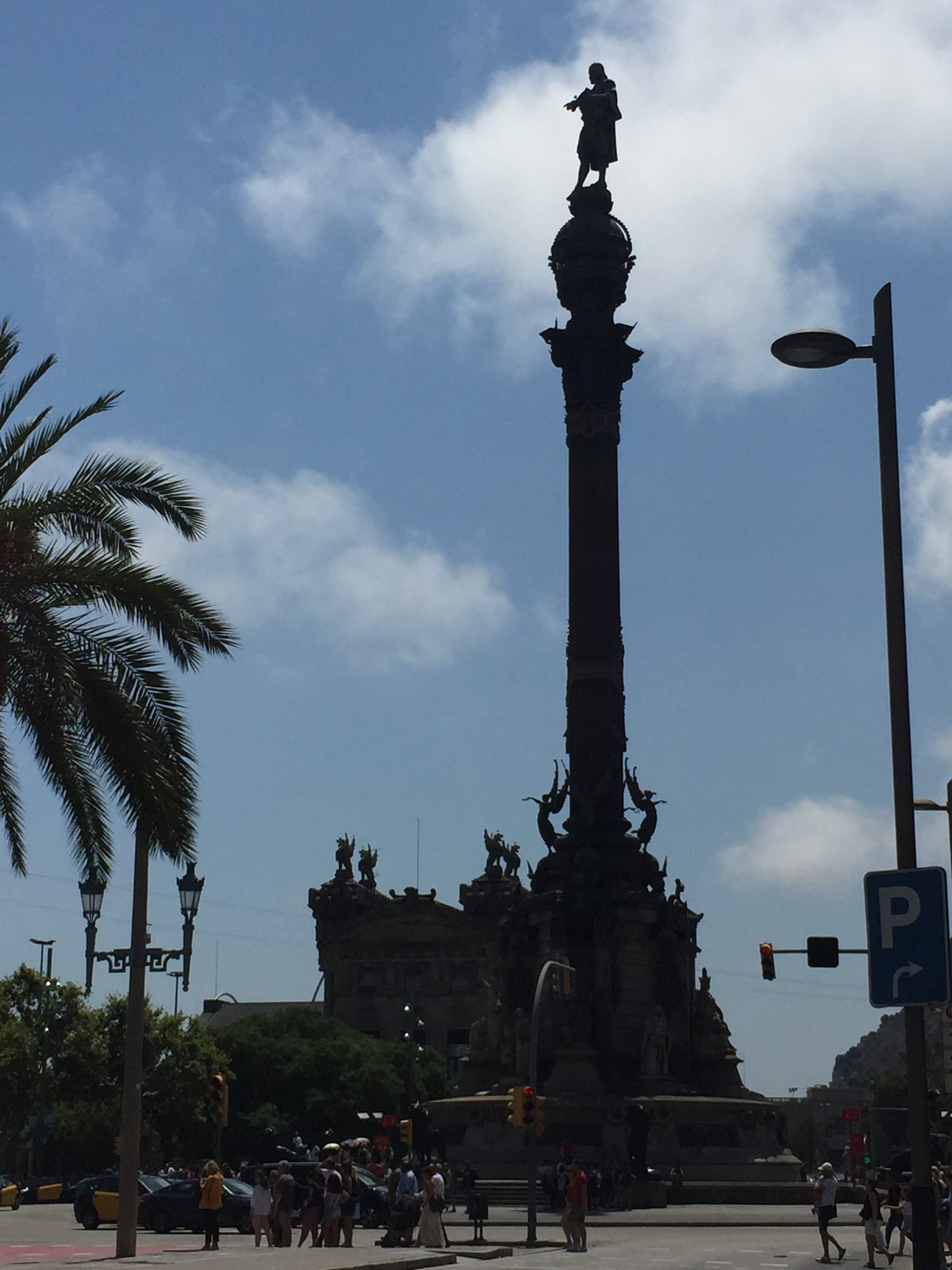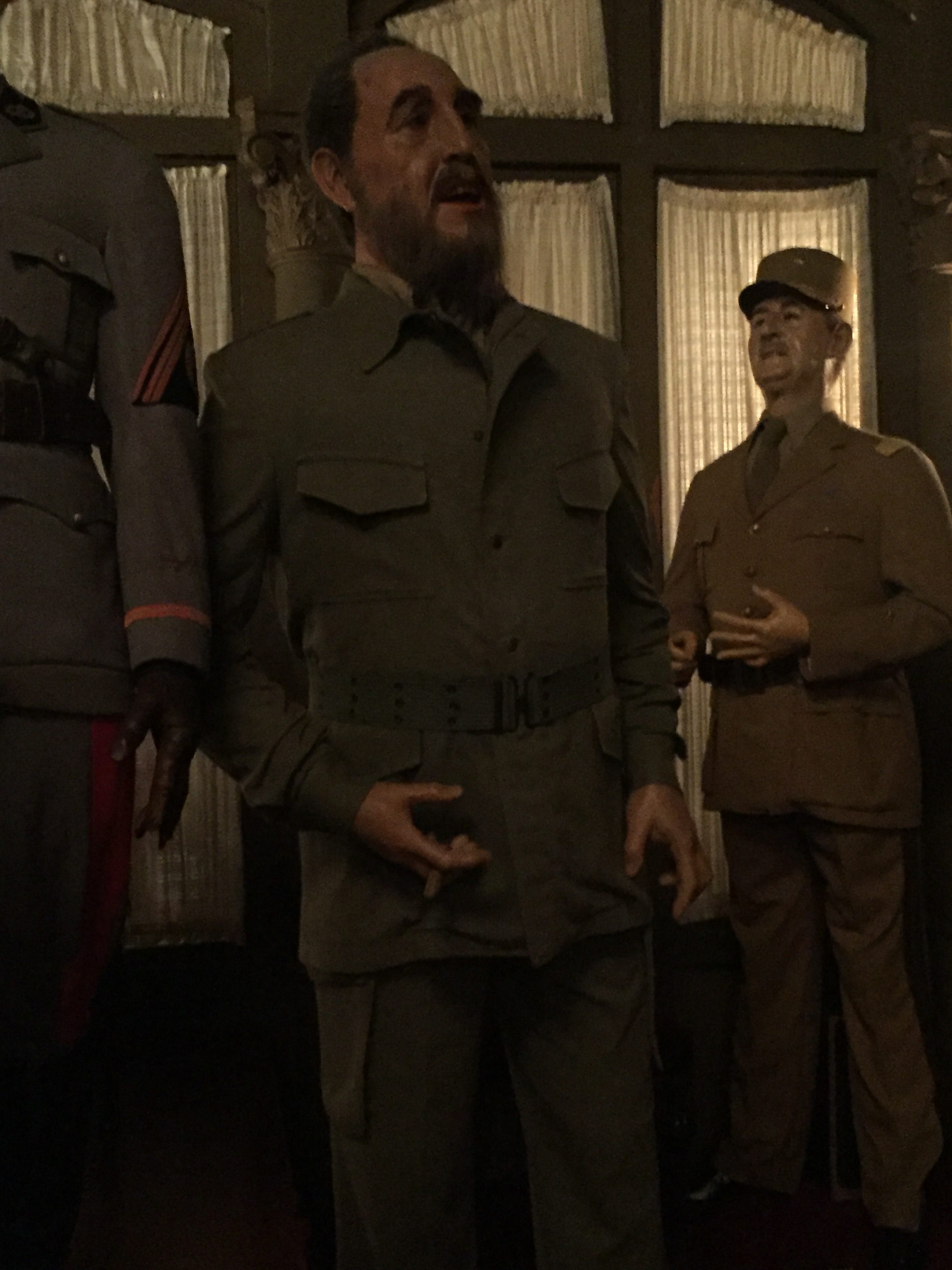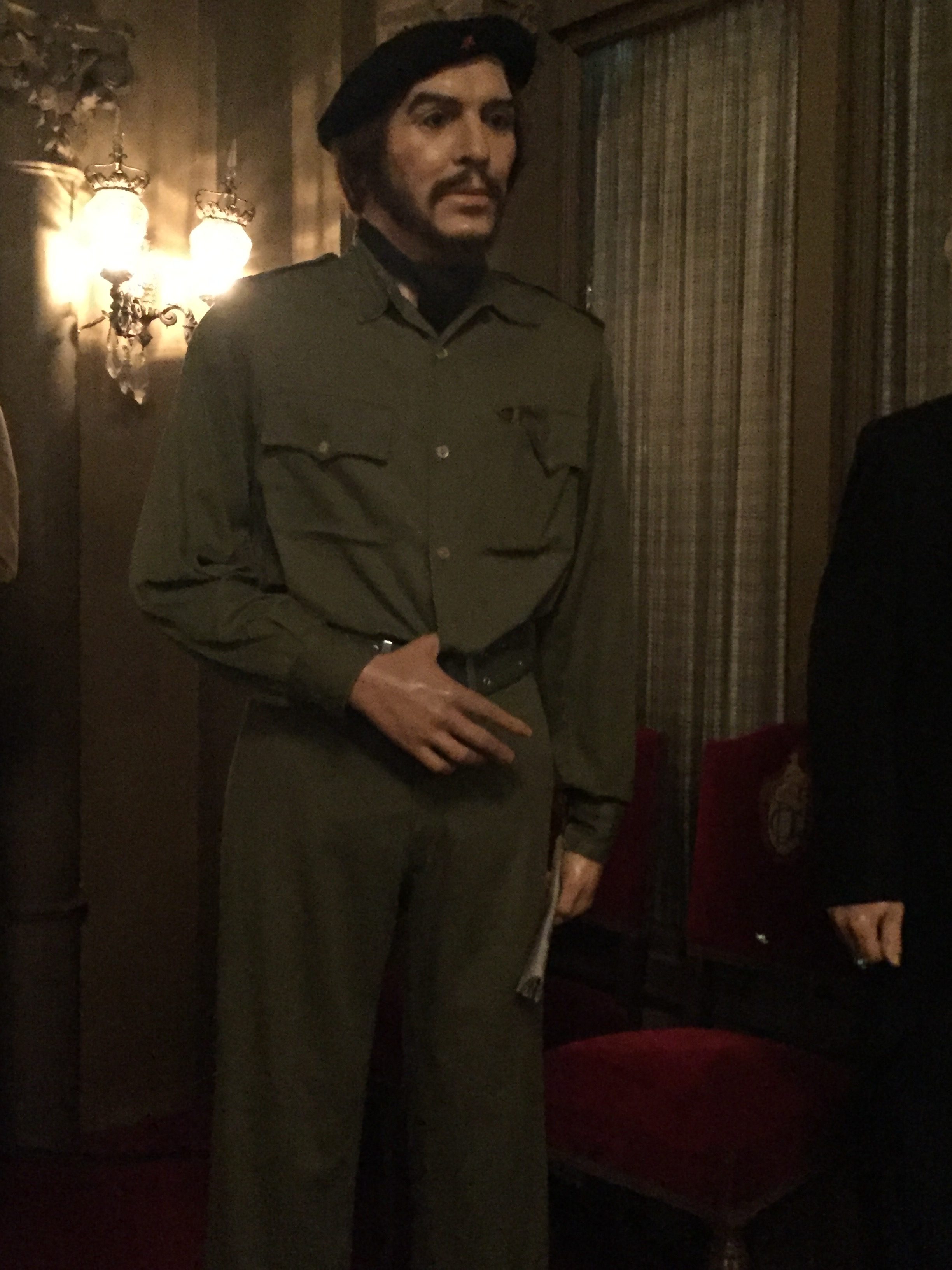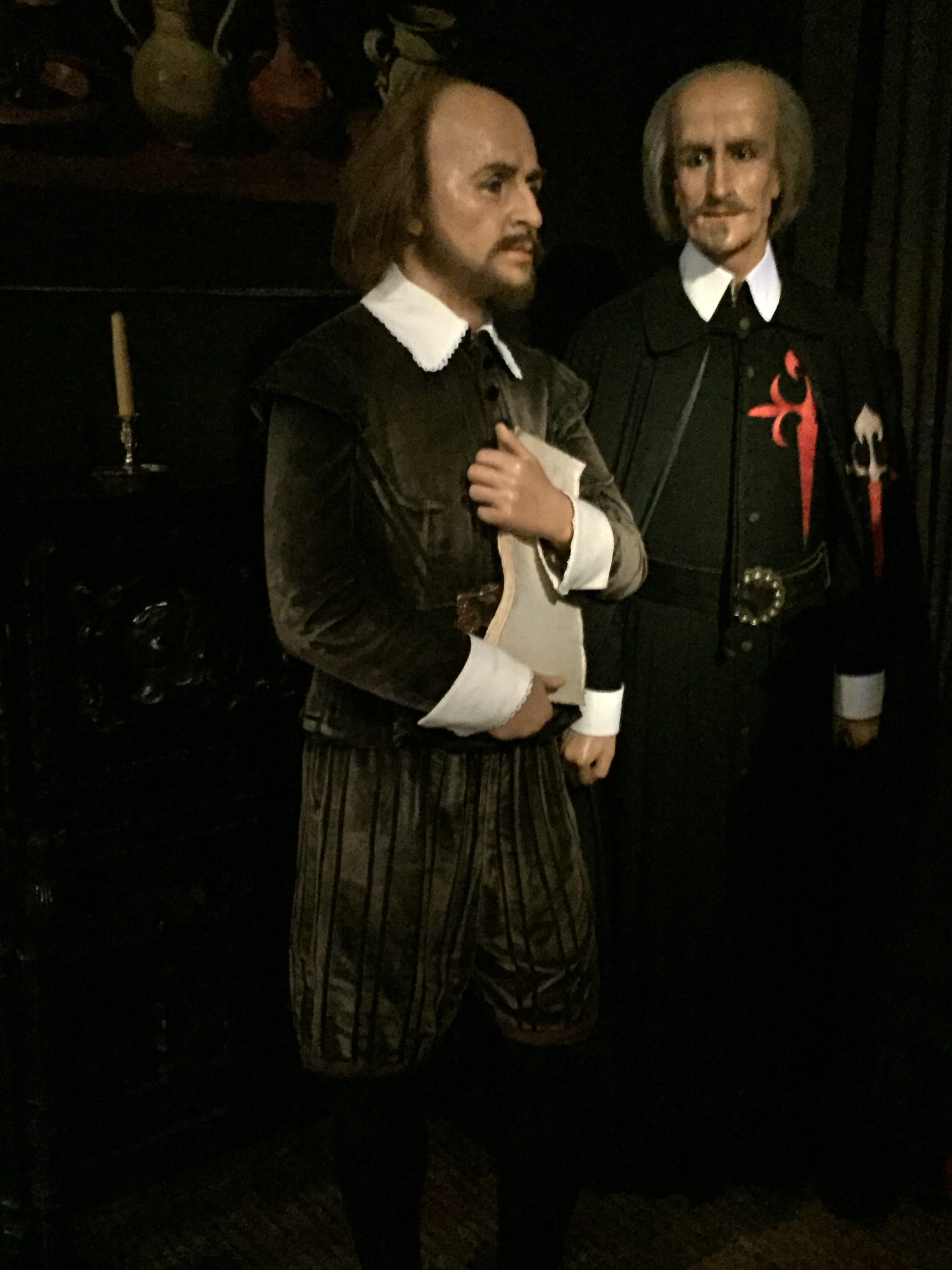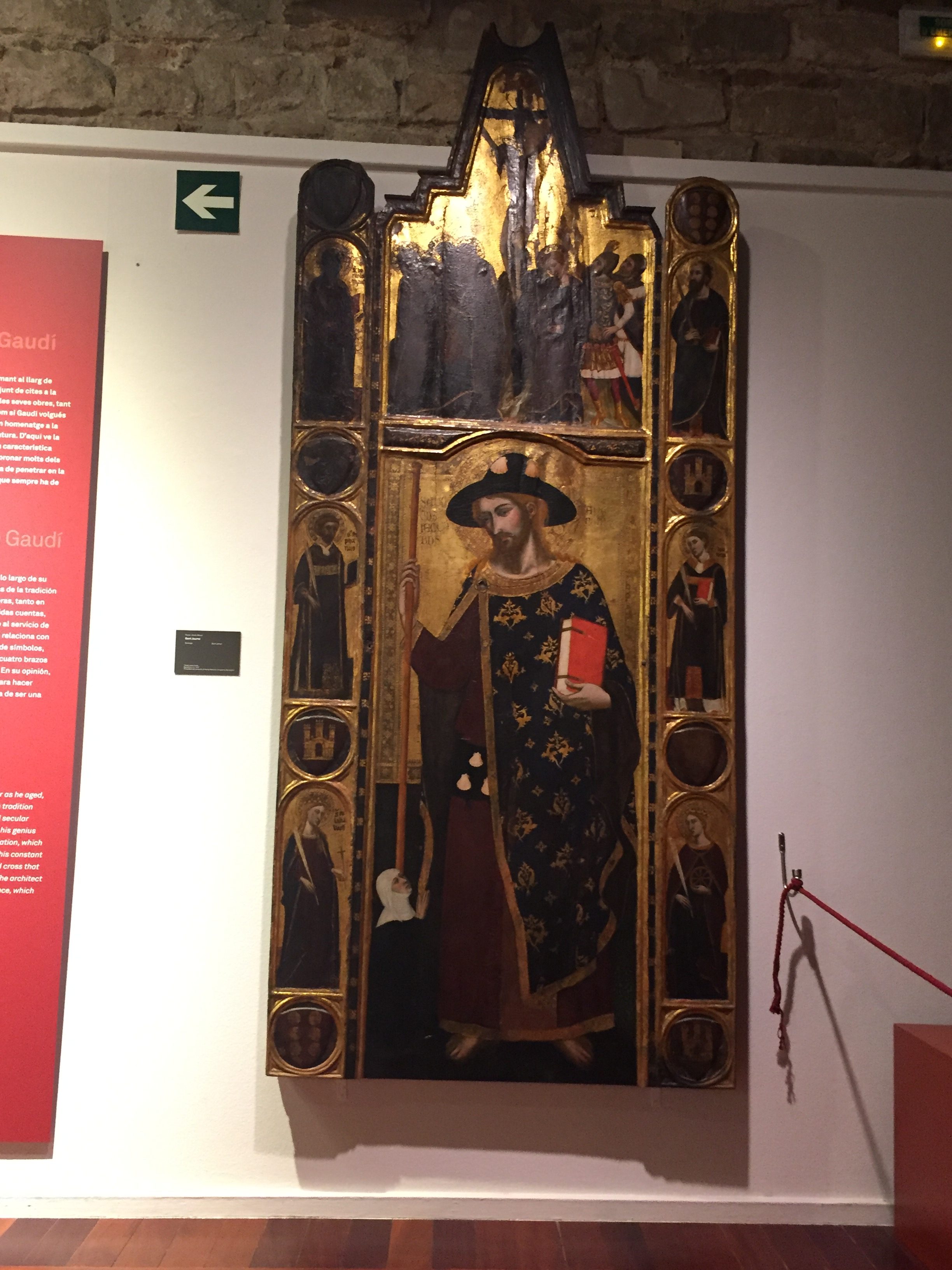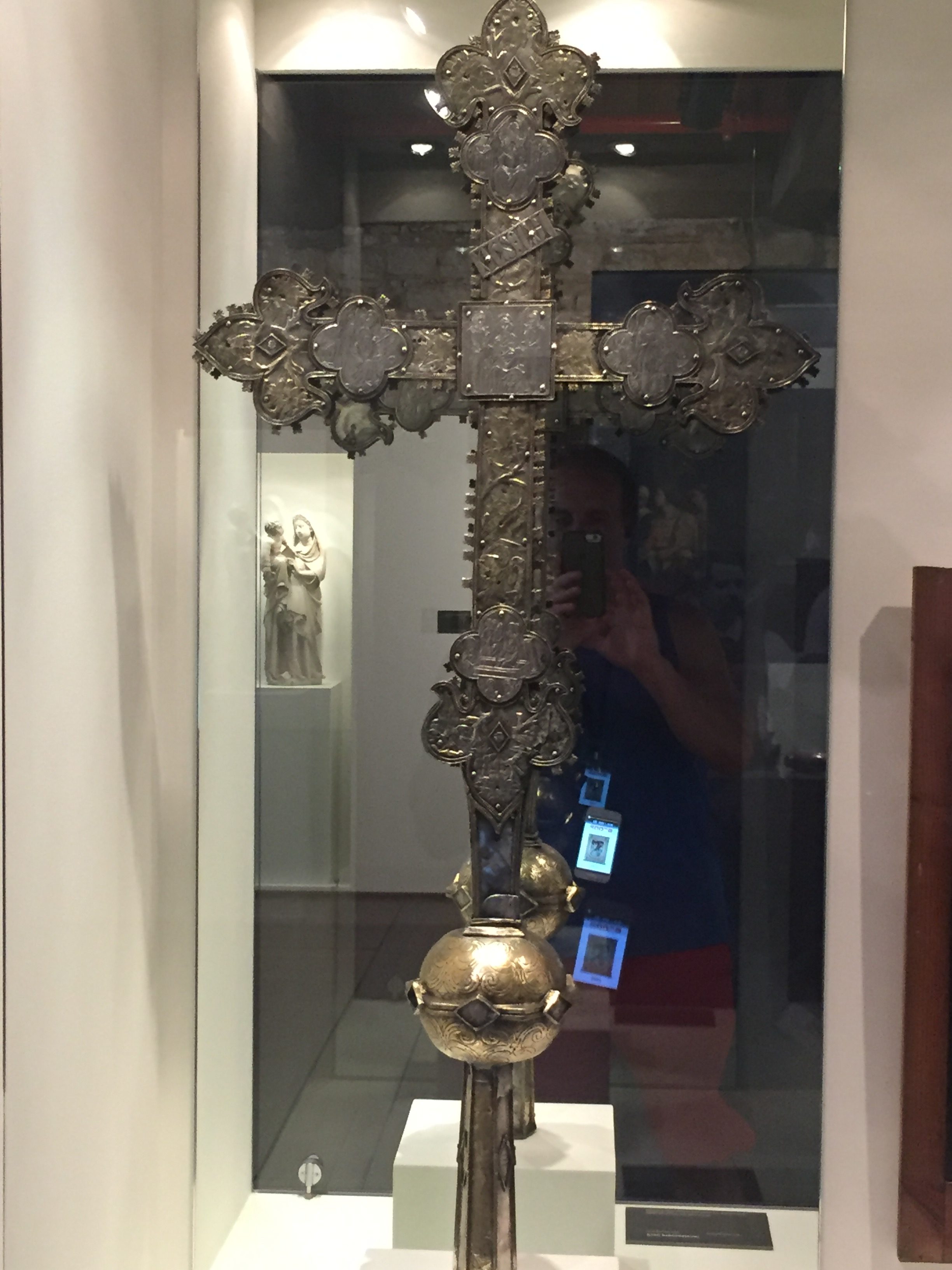CPT Travel Blog- CPT Visits Barcelona- Days 4 – 6
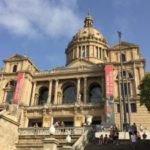
August 1, 2017
Day 4- SA July 29: Picasso Museum, Museum of Modern European Art, Museo de Cerna, Maritime Museum, The Farmacia, and Sun Poisoning
When I woke up in the morning I was hungry after eating only 2 meals the prior day. Therefore, I immediately searched for a restaurant that served el desayuno (breakfast). I found a place on Borbó that advertised a reasonably priced Spanish omelet breakfast. After eating there I can come to only 2 conclusions: 1) the Spanish omelet I may eat at First Watch or The Broken Egg Café is not authentic or 2) the cook at this restaurant needs to travel to the USA to learn to make an edible omelet. I love eggs. But, that had to be the most tasteless omelet I have ever had, no matter its ethnic origins.
Upon eating the bland omelet that had terrible texture and barely any noticeable taste, I headed to the Picasso Museum, which is about a 20 – 25 minute walk from Nico’s place. To avoid the ticket line, yo compré los boletos en el internet (I bought the tickets online). Walked right in. Sweet! Unfortunately, the entry may have been the best part of the museum.
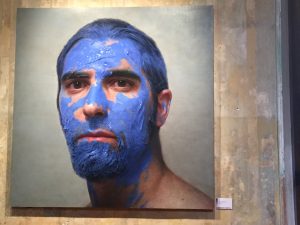
The Museu Picasso houses 4,251 works from Picasso’s “formative years.” Pablo Picasso (1881 – 1973) started drawing and painting as a young child in Spain, during which he resided in Barcelona between the ages of 14 and 20. Picasso’s early works from elementary school through his late teens are mostly portraits constructed in a natural style. His work during these years demonstrates artistic talent, but in my opinion is not spectacular or memorable. Then, after moving to Paris and experiencing the suicide of a close friend in 1901, Picasso himself became depressed and entered his Blue Period, during which his paintings were mostly portraits of despondent subjects, contained less detail than his earlier work, and were often monochromatic, emphasizing blue as the base color. As Picasso’s mental state improved, in 1904 he entered his Rose Period. His paintings still emphasized human subjects, but now they were active, joyous, and featured earth tones. In 1907 Picasso entered his African Period, which was a proto-Cubist period where the lines and styles of African tribal art influenced his work. Faces became long and narrow and shape and imagery became more important than color. In 1909 Picasso became one of the pioneers of Cubism, in which collages of geometric shapes and three-dimensional depth replaced the traditional image of subjects. In 1912 Picasso expanded into Synthetic Cubism, during which his works included more than human subjects, became very abstract, and incorporated multiple media.
During this period Picasso received greater renown worldwide, which was facilitated by the novelty of his painting style and some new relationships. Picasso married socialite Russian ballerina, Olga Khokhlova, which provided him superior connections to the rich and famous. He also started an exclusive business relationship with exemplary French art dealer Paul Rosenberg.
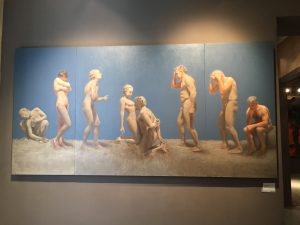
If readers are interested in efforts to reclaim art stolen by the Nazis during World War II they can’t do much better than reading a biography of the Rosenberg family. The Rosenberg’s lost over $1 billion in paintings (present day value) to the Nazis and are still intermittently in court attempting to recover artwork that rightfully belongs to the family, including a 1997 lawsuit that involved the Seattle Art Museum and its Director, Bill Gates’s mother, Mimi, and a 2012 finding of many high-value Rosenberg-owned pieces (including multiple Matisse paintings) stored illegally by a deceased German collector, Cornelius Gurlitt.
Picasso and Olga had a son. However, as time marched on Picasso and Olga marched in different directions.
During Picasso’s next artistic stage, 1919 – 1929, he returned to Neoclassicism and then ventured into Surrealism. His later works included a variety of styles of oil and drawing and he expanded into sculpture. Picasso was a highly prolific artist who was willing to take risk and adapt on a whim.
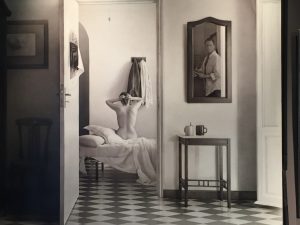
Picasso was equally adventurous in his personal life. In 1927, Picasso started an 8-year affair with a 17-year old, Marie-Therese Walter, who he frequently used as a model in paintings, depicting her as blonde and happy. During their 8 years Marie also gave birth to a daughter. After Olga learned of the affair she and Picasso separated, but never divorced. In 1935 Picasso replaced Marie-Therese with the photographer Dora Maur, who became his muse and sometimes model until 1943, although he sometimes would still get together with Walter, who always aspired for Picasso to eventually marry her. In 1944, at the age of 63, Picasso started a fling with a 23-year old art student, Francoise Gillot, with whom he would later have 2 children. He physically and psychologically abused Maur and Gillott and had numerous little affairs. Then, in 1961 Picasso married his second wife, Jacqueline Roque, with whom he remained married (if not faithful) until his death. The biographies and autobiographies of Picasso, his lovers, and his children depict anger, sadness, depression, abuse, broken promises, and multiple suicides. The man’s romantic and family life is as interesting as his paintings.
Unfortunately, Picasso’s biography above is more interesting than the eponymously named Museum with the 90-minute ticket line. Supposedly, the Museum owns 4,000 something paintings. Yet, I was done with all the exhibit rooms in less than 60 minutes. Moreover, Picasso’s early traditional “formative” years are his least interesting and noteworthy. The Museum Picasso has not one famous piece of work, because the Museum specializes in Picasso before he became famous- and unique.
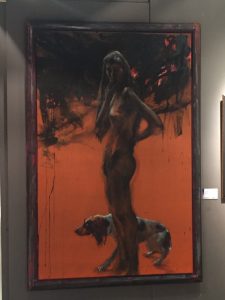
Still, the worst part of the Museum was that Museum policy did not allow photography, with or without flash. Moreover, they had guards posted in every room to toss people if they tried to sneak a camera phone shot. From my perspective, my photos are what remains after I leave. I can understand disallowing flash photography. However, I can not understand forbidding any photography. The Museu Picasso was the only museum in Barcelona that had such a policy.
In summary, due to the surprising brevity of the museum experience, the restricted selection of paintings, and the prohibition of photography, I can not recommend the Picasso Museum. It was very underwhelming. I have seen better Picasso exhibits at MOMA in New York, at the Metropolitan Museum of Art in New York, at the Smithsonian’s National Gallery of Art in Washington, D.C., and at the Virginia Museum of Fine Arts in Richmond.
Although I was very disappointed in my first art museum in Barcelona I did not want to give up. The Museu Europeu d’Art Modern was only about 50 yards from the Museu Picasso. Therefore, I thought I should give it a whirl, despite the lack of traffic at the door. I am glad I ventured inside.
The European Museum for Modern Art has a goal of displaying and promoting figurative photography, painting, drawings, and sculpture from living 20th and 21st century artists. The museum displays only 230 works, but the quality of those works is outstanding. I saw more gaze-worthy art in the first exhibit hall than I did in the entire Picasso Museum.
The majority of the works were faces and full-body nudes. Each exhibit halls emphasized a slightly different style, from natural to highly abstract. Nevertheless, each work was carefully selected so that the compilation was both cohesive and unique, which is normally a prescription for oxymoronic discordancy, but in this case worked to create an aesthetically pleasing fusion of contemporary figurative European artistic style. Best of all, there were no rules against patron photographs!
After visiting the Museu Europeu d’Art Modern, I walked west toward La Rambla. La Rambla is a 1.2 kilometer street mall that connects the Christopher Columbus monument at Port Vell in the south to Placa Catalunya in the north. La Rambla has plentiful outdoor cafes, street merchants, and street performers. The street is popular with both locals and tourists and was very crowded with shoppers, browsers, and gawkers.

After walking around La Rambla, I entered the Museu de Cera (Wax Museum). The Wax Museum contains 360 full-body historical and fictional wax figures. The building is beautiful, as it was constructed first in 1867 as the headquarters of the Bank of Barcelona and was later renovated in 1973 to transform it into the Museu de Cera. The majority of figures look amazingly real. The museum also does a fantastic job of dressing the figures in clothing relevant to their culture, time, and occupation. I especially liked the historical figures, although I imagine that patrons unfamiliar with the real-life persons who spawned the wax figures will not be as appreciative of the museum. My favorites from the standpoint of facial realism and attire were the Shah of Iran, Vladimir Lenin, General Francisco Franco, Fidel Castro, Albert Einstein, William Shakespeare, and Pablo Picasso.
After visiting the Wax Museum I headed back to a side street off La Rambla to eat a Turkish lunch of lamb kabobs and rice. Then, I headed south to the Maritime Museum.
While walking around the city I noticed numerous dogs, probably of which 30% to 40% were off-leash. Again, the vast majority were very well behaved, despite the plentiful distractions of cars, scooters, people, and other dogs. Furthermore a clear majority of the dogs were small, with a significant number of Yorkies, which library research showed was the most popular breed in Spain. I would have taken more photographs of the dogs. However, when taking photos of people and/or their dogs I prefer to be more clandestine and discreet than when photographing inanimate objects. I don’t want someone angry that he or his dog became a subject of my photograph to respond like Sonny Corleone did to the photographer at Connie’s wedding. Nor would I want an angry person to have me looking like Sonny after he stopped at the tollbooth on the Causeway.
My next stop in my planned logistical path was The Maritime Museum. The Museu Maritim de Barcelona is located in a huge warehouse building that formerly housed the Drassanes Reials de Barcelona (The Royal Arsenal of Barcelona), which from the 13th to the 18th century was a major shipbuilding center. The Maritime Museum, which opened first in 1936, then closed for renovations in 2012, and then reopened again in 2014, shows the history of ship building and shipping from Roman times through today. The building contains an interesting juxtaposition of life size and scale model rowboats, galleys, battleships, tankers, frigates, and even a speedboat. Meanwhile, displays provide information about the evolution from oars, to sails, to steam engines, to internal combustion engines as the means of power and similarly provide education regarding the advancement in navigational equipment from stars, to compasses, to sextants, to GPS. The highlight is a full-size, 60 meter, 16th century galley ship that in October 1571 was involved in a fight against the Turkish Armada in the Battle of Lepanto. Although I believe that certain sections of the museum could have been more informative, the museum certainly provided excellent visual displays that documented advancements in shipbuilding and shipping technology.
Upon viewing the Maritime Museum I walked back to my AirBnB apartment. By this time my cough was getting worse. Therefore, I stopped at La Farmacia to purchase some cough syrup. They had both a dextromethorphan antitussive syrup and a natural syrup that the pharmacist said worked well with “dry coughs.” Since at that juncture the cough was more a dry cough I went with the natural syrup, although in hindsight I should have gone with the dextromethorphan.
Nonetheless, once I returned to the apartment and took the cough syrup, other symptoms developed. I started to exhibit signs of sun poisoning, including skin that was red and hot to the touch, fever, chills, heavy perspiration, nausea, fatigue, and loss of appetite. The symptoms were very similar to having the flu. Thus, I had no appetite, was too tired to leave the apartment to get dinner, and just spent the rest of the evening either taking cold showers or hovering under a blanket to minimize chills. In hindsight, not using sunscreen at the beach or while running combined with the constant heat and humidity, lack of air conditioning, and lack of sleep probably took a cumulative toll. I next to never get sick. I haven’t missed a day of work due to illness in over a decade. However, that night I felt pretty awful, especially as I perspired through the pillow and mattress. Moreover, without a dehumidifier or air conditioner the bed always felt wet thereafter.
Day 5- SU July 30: Sun Poisoning Improves, Barcelona Cathedral, Gaudi Museum, Museum of Contemporary Art, and Palau Guella
When I woke up in the morning my cough persisted, but was not as frequent or severe. Even better, the sun poisoning symptoms had become much less significant. Still, my appetite was not normal. Therefore, I didn’t eat breakfast until after 12 and I wasn’t very hungry, despite skipping dinner the night before. Moreover, I still didn’t feel well enough to complete a planned morning run. Thus, walking to sites would remain my physical activity for the day.

The first site on the agenda was the Catedral de la Santa Cruz y Santa Eulalia (The Cathedral of the Holy Cross and Saint Eulalia), better known simply as the Barcelona Cathedral, located at Placita de la Seu. The Cathedral is the seat of the Archbishop of Barcelona. The Barcelona Cathedral was constructed from the 13th to the 15th centuries, with an exterior update in the 19th century to add a more Gothic look to the façade, gargoyle animals to the roof, and additions to the central tower. More recently, in response to the benefits and inconveniences of modern tourism, the church added a gift shop in the interior, converted real candles adjoining the shrines to electric candles, and banned cellular phones from the chapel. I took photos of the exterior. However, a guard would not let me pay the fee to visit inside because I was wearing a tank top and gym shorts. Many churches in Barcelona require that visiting men and women cover their shoulders and that pants, dresses, or skirts, reach the knees. I wasn’t concerned at missing the indoor view of the Cathedral since I would see La Sagrada Familia on Tuesday and would visit magnificent cathedrals in Montseratt and Girona later in my trip.
Since I planned my visits logistically, my next stop was La Exposición Centro de Gaudi (The Gaudi Exhibition Center) en la Museu Diocesa de Barcelona (at the Diocese Museum). The Gaudi Exhibition Center provides an excellent introduction to the architectural vision and philosophies of Antoni Gaudi.
Gaudi (1852 – 1926) is known as the master of Catalan modernism. Despite being a mediocre student in architectural school, Gaudi flourished once receiving the opportunity to work practically in the field. He designed many distinctive houses and churches in Barcelona, including his most famous work, La Sagrada Familia, the most visited tourist site in Spain. Other famous or noteworthy Gaudi structures in Barcelona include the Palau Guell, Park Guell, Casa Battló, and Casa Milá.
The Exhibition Center had an excellent visual and audio tour that explained the development of Gaudi’s interior and exterior work and the influences that inspired him. Gaudi was a devout Catholic. Therefore, religious figures, stained glass, and churches were common in his designs. Gaudi was also influenced by Indian, Persian, Egyptian, Moorish, and Japanese art and architecture, neo-Gothic architecture, and the movements of nature. He preferred open space and non-linear forms. He found straight lines boring, while appreciating the strength, beauty, and geometry of arches, curves, and fractals. And he often tried to duplicate the natural forms of animals, mountains, caves, water, and trees into the exterior and interior of his building designs. Plus, he was creative in his implementation of light and color and the use of scale models, instead of sketches, to prepare his work.
Moreover, Gaudi was not only a renowned architect, but an exquisite interior decorator, who believed that both the exterior and interior of a design must coincide to maximize its appeal. Functionality (including the installation of utilities such as electricity, water, and gas, which were becoming more popular), use of space, and the implementation of natural and religious forms were all common to Gaudi’s interior designs. He considered optimal natural sunlight as important to both the beauty and functionality of his structures and often incorporated atriums, skylights, windows, stained glass, shutters, and blinds to best display a room, as well as elaborate trim, sliding doors, and wall closets to maximize the room’s aesthetics and utility. Furthermore, when possible he would face the structure in the direction that maximized sunlight exposure.
Gaudi’s creativity and uniqueness maintain him as one of history’s most recognized architects. Although most of his commissions were constructed in Catalonia, he completed designs for clients from throughout the world. Eight of his buildings are on the list of UNESCO (United Nations Educational, Scientific, and Cultural Organization) World Heritage sites, which means that the United Nations has selected the location as having distinctive historical, scientific, or cultural significance. Presently, UNESCO has named a total of 1,037 World Heritage sites, of which 8 are Gaudi designs.
The Gaudi Exhibition Center was great preparation before seeing La Sagrada Familia. The Museum provided excellent insight into Gaudi’s design strategies and his obsession with designing religious commissions. Thus, I was much better able to appreciate and understand his architectural philosophies and structures.
I next headed toward the Museu d’Art Contemporani de Barcelona (The Barcelona Museum of Contemporary Art) located at Placa dels Angels. Unfortunately, the Museum of Contemporary Art is closed Sunday- well at least to art connoisseurs. In the absence of art enthusiasts the Placa dels Angels harbored numerous skateboard aficionados. The concrete plaza probably had 30 to 40 skateboarders performing a variety of tricks while the sound of the wheels, crashing boards, and some crashing people echoed throughout the plaza. After watching the skateboarders for a few minutes, most of whom were not wearing helmets, I decided to walk southeast to Palau Güell, one of Gaudi’s most famous commissions.

Palau Güell is an urban mansion near La Rambla that between 1886 and 1888 Gaudi designed and built for Catalonian textile industrialist Eusebi Güell. Palau Güell is on the list of Unesco World Heritage sites. The house features iron gates for horse carriage entry, parabolic arches (a Gaudi staple), intricate carved trim, and decorative vaulted ceilings. Unfortunately, I arrived a bit too late for the last Sunday tour. Therefore, my viewing of Palau Guell was limited to the exterior edifice.
During my city walk, for the first time I noticed several Pit Bulls. Spain has interesting laws regarding Pit Bulls and other “potentially dangerous breeds.” Since 2002, any person owning a potentially dangerous dog must obtain a special license and the dog must be registered with the municipality. Similarly, professional handlers and walkers of potentially dangerous dogs must also obtain a license, which is then valid for 5 years. Dogs may be declared potentially dangerous by falling within any of 3 categories: 1) breed, 2) physical characteristics, or 3) a history of aggression.
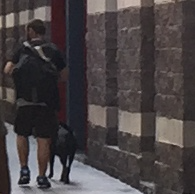
Breeds that are automatically considered potentially dangerous include Pit Bull Terriers, American Staffordshire Terriers, Staffordshire Bull Terriers, Rottweilers, Akitas, Dogo Argentinos, Fila Brasileiros, Tosa Inus, Presa Canarios, and Mastiffs or any crosses of the preceding breeds.
Physical characteristics that could automatically classify a dog as potentially dangerous include strong musculature, short hair, deep chest, height over 50 cm (20 inches), weight over 20 kg (44 lb.), a big, square head, a broad, short neck, and straight forelegs with muscular long back legs and hindquarters, where the dog’s appearance is similar to that of any of the classified breeds. In addition, regardless of breed, any individual dog that has displayed aggressive behavior to a person or animal is also classified as potentially dangerous.
The person licensing a potentially dangerous dog, such as a Pit Bull, must be over 18 years of age, have no criminal convictions, pass a test proving both physical and mental competence to handle such a dog (which will cost about 75 Euros), maintain liability insurance for a minimum of 120,000 Euros, provide proof of vaccination, microchip the dog, and prove that the dog attended a professional training school for dogs.

Municipal registration of the potentially dangerous dog must include proof of the human’s valid license, proof of microchip identification, and a veterinary health certificate.
When walking a dog classified as potentially dangerous, owners and handlers must carry their license and dog registration, the dog must be muzzled and on a leash of not greater than 2 meters (6.5 feet) in length, and must be walked independent of another dog.
To avoid the requirement of walking with a muzzle, licensed owners or handlers and the dog need to pass a test administered by an appointed veterinarian. The purpose of the test is to ascertain whether the dog is nonaggressive and can easily and safely be handled by the owner and veterinarian in a public setting. The test costs 50 Euros and if a dog passes the certificate is valid for a period of 12 months, whereupon the dog will need to be retested.

Violators who do not obtain licenses and registrations and/or who do not adhere to rules for handling potentially dangerous dogs risk a fine of up to 115,000 Euros.
I saw large Pit Bulls muzzled on-leash and some walked on-leash without muzzles. I also saw one walked off-leash without a muzzle. The pit bull walked off-leash was walked proximal to 2 urban guardia, who didn’t bat an eye. From reading online, despite the provisions of the Dangerous Dog Act/Royal Decree of 2002, the law is not avidly enforced by local police, which my observation clearly confirmed.
When I arrived back at Nico’s I was hungrier than I had been the past few evenings. Therefore, I headed to a nearby Uruguayan restaurant that served parrillada, a variety of grilled meats (a sirloin steak, a flank steak, chicken breast, and 2 types of sausage) plus grilled creamed potatoes. The potatoes were incredible as was 1 of the steaks. Nevertheless, it was way too much to eat at 1 sitting. Thus, I asked for llevar a mi casa (carry home) to eat parrillada for tomorrow’s breakfast.
Then, I tried to persevere through the lack of air conditioning, the heat, and the humidity to finally catch up on several days of inadequate sleep.
Day 6- M July 31: Beach Run, No Air Conditioning, Museum of Contemporary Art, National Art Museum
Call me a “spoiled American,” but sleeping without air conditioning was not easy. Nico’s apartment stayed hot and humid all the time. The only thing that provided a temporary respite was a cold shower. In my Johns Creek home I have probably not taken one cold shower in the 14 years I have owned the home, whereas in Barcelona I took 3 cold showers a day to try to quell the constant perspiration and muck that transpired from the outdoor heat and humidity and the lack of indoor air conditioning. Furthermore, Nico’s standing, portable fan, although it provided some cooling, probably made my cough worse by creating a draft while I was constantly hot and sweaty.
America consumes more energy for air conditioning than any country in the world, although China may soon exceed our AC consumption. Cultural acclimation has prompted Europeans to prefer warmer summer room temperatures than the typical 70 degrees preferred by Americans. In addition, Europeans tend to be more environmentally conscious regarding global warming, the effects of HVAC hydrofluorocarbon (HFC) coolant on air quality and global warming, and the financial and pollution costs of generating the electricity required to cool residences and businesses during the summer months. Yet, research shows that regardless of cultural acclimation, indoor air conditioning during summer months improves work productivity, enhances sleep duration and quality, and lowers mortality.
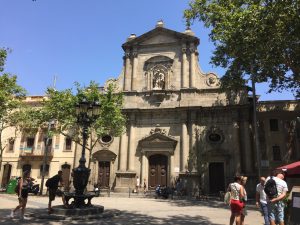
Therefore, hot and humid countries around the world are beginning to increase their usage of air conditioning. For instance in India, in 2007 only 2% of households had air conditioning. By 2011 the number was 5%, with an increase of 20% per year, whereby there are now 25 million units in the country that have challenged the capacity of the electrical grid and prompted blackouts during periods of peak usage. Brazil is also undergoing a huge increase in the use of indoor air conditioning.
In the USA, 87% of households have central or window air conditioning units. The figure is 98% in the South. Air conditioning was invented by Willis Carrier in 1902. Window units were most common until 1981, when central units became more common. Now, almost all new homes in the United States are constructed with central air conditioning. According to the US Energy Information Administration 95% of homes constructed in the 2000s have central air, whereas only 30% of homes built before 1940 had either central or window air conditioning.
Yet, Europe does not share America’s love for treated air. In Austria and the UK only 1% of homes have air conditioning. In Germany only 2% of homes have air conditioning and its public trains are known to become sweat boxes on hot summer days. The French are a little more like Americans, but not much. 5% of French homes have air conditioning. Air conditioning usage in Italy is 30%, but significantly higher (50%) in southern Italy. 38% of Spanish homes have air conditioning. The most notable exception in Europe is Greece, where 99% of homes have air conditioning!

Unfortunately, Nico’s place fell within the 62% of Spanish homes without air conditioning, which explains why Nico did not purchase a tourist rental license. First, Barcelona is not allowing new licenses in Ciutat Vella. Second, Barcelona requires that all tourist rentals include a fixed air conditioner (not a portable fan). Moreover, licensed property owners who rent property to tourists for periods of less than 31 days must pay a value added tax, pay income tax of between 24% to 45% quarterly on the rental profits, pay social security tax on the rental income, register the property with the municipality, provide an emergency contact name/number to the municipality, limit the occupants to an agreed upon quantity related to the square footage of the apartment or house, pay an administrative fee and a license tax, pay a daily tourist tax for each day the unit is rented, provide a first aid kit and fire extinguisher in the unit, and on an online system register each renter’s name, passport number, contact info, and dates of rental.
What a pain in the bureaucratic ass! No wonder Nico wants to stay under the radar. Nevertheless, regardless of whether he is registered, if he wants to rent to Americans during the summer months, Nico should have installed air conditioning- at least a window unit!
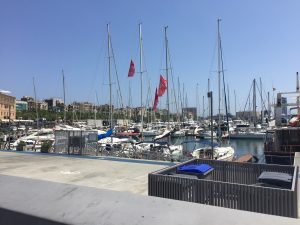
Before eating breakfast I went for a 5.3 mile run along the beach. I was accomplishing some nice times, but then the heat started to get to me. The heat was also getting to my iPhone encased within an extra armband I brought. The extra armband, which I packed as a backup should my favorite armband break during the trip, which it did, was a different design from a different manufacturer. The soft, thick black case was comfortable and provided plenty of cushioning for the phone, but was a heat magnet inside the case. During the run I received several overheating warnings and one occasion where the phone severely overheated, where for several minutes I had to remove it from the case and place it in the shade for the iPhone to again become operational and music to play. Running is far more pleasant with the accompaniment of music.
I began the run a little after 10:30 am when it was already in the low 80s. When I finished the run at about 11:30 am it was 88 degrees. And there was near zero shade along the boardwalk. The heat made the run physically and psychologically difficult. Nevertheless, the scenery along the beach was very nice. At 10:30 am there were already a surprising amount of people tanning and swimming at the various beaches. Moreover, there was a feeling of accomplishment that I persevered through the heat.
I primarily run to stay in shape and maintain my weight, which by the way is the same as it was during graduate school 30 years ago. I don’t really enjoy running while I am running, especially in the heat. However, I always appreciate the exhilarating feeling that occurs upon the completion of a difficult run. Thus, when I travel I try to remain disciplined by scheduling taxing workouts, even in the heat.
Once returning to Nico’s AirBnB, I took a cold shower to attempt to lower my body heat and ate my leftover parrillada for breakfast. Then, it was time for a 30-minute walk to the Museu d’Art Contemporani de Barcelona (The Barcelona Museum of Contemporary Art), which was not open on Sunday, but would be open on Monday.
The Museum of Contemporary Art is a fairly new museum. The museum first opened to the public in 1995, 3 years after its planned debut during the 1992 Summer Olympics. The distinctive white building has a stunning design both in the exterior and interior. Interestingly, despite Barcelona’s reputation for architecture, the firm that designed the building was the American firm of Richard Meier & Partners. Meier is also known for designing The Getty Center (Los Angeles, CA), The High Museum (Atlanta, GA), The Paley Center for Media (Beverly Hills, CA), San Jose City Hall (San Jose, CA), City Tower (Prague, Czech Republic), and city halls in The Hague (Netherlands). The building is a stunning white color with, cubist glazed concrete shapes, and an abundance of purposefully angled glass focused in a direction that maximizes natural lighting during the times of day the museum is open. Like with The High Museum, in the interior Meier used long ramps, rather than steps, to enable patrons to ambulate amongst the 3 floors of the museum.
Unfortunately, the building’s architecture was much more visually stimulating than was the artwork exhibited within the indoor galleries. Although the museum has a permanent collection of over 5,000 works of contemporary post World War II Catalan and Spanish artists, the majority of the exhibits were temporary and consisted of mundane photography and forensic art. The forensic art exhibit was mildly interesting, whereby the placards and displays explained how forensic art is the technology and practice to visually reconstruct crime scenes for law enforcement and trial evidence. The forensic exhibit had multiple examples of how video and still photos of drone strikes, terrorist attacks, and murders are used to create composite drawings, study evidence, and determine sequences of events, and ultimately guilt. Yet, given the quality of the building and the reputation of the museum I was expecting galleries equivalent to the caliber of MOMA (Museum of Modern Art) in New York. Therefore, I was very disappointed. The most visually appealing piece of art was a mound of paper waste from a shredder, which was surprisingly aesthetic in a Warhol-esque way.
After exiting I watched skateboarders for a few minutes and then headed west to the Parque de Montjuïc (Montjuic Park). Montjuïc means “Jewish mountain” in Catalan. The name derives from a medieval Jewish graveyard situated on the site.
However, much more is situated on the mountain, which is really a large, broad hill that peaks at a height of 185 meters (607 feet) and that has a sheer cliff on its eastern perimeter. Montjuïc Park contains Montjuïc Castle, a 17th century military fortress and prison that is presently a municipal works facility, the Palau Nacional (National Palace, a noteworthy art museum), the Fundació Joan Miró, a modern art museum that focuses on the works of Joan Miró, El Museu Etnologic (Barcelona Ethnologic Museum), El Museu d’Arquelogia de Barcelona (Archaeology Museum), the Juan Antonio Samaranch Olympic and Sports Museum, El Jardin Botanic (Botanical Gardens), the Estadi Olimpic (Olympic Stadium), the Font Mágica (Magic Fountain), the Montjuïc Formula One Race Track, which is no longer on the Grand Prix circuit after a severe crash killed 4 spectators, the Institut Nacional d’Educació Fisica de Catalunya (National Institute of Physical Education of Catalonia, a sporting events center), La Piscina Municpal de Monjuiïc (the municipal pool, which is also used for swimming and diving competitions), El Cementiri del Sud-Oest (also called Monjuic Cemetery), which contains the graves of notable politicians, celebrities, and artists plus the unmarked graves of those executed when Montjuïc Castle was a prison, El Funicular de Montjuïc (a funicular railway to help people up the hill), and a metro station. Many of the mentioned facilities were important venues during the 1992 Barcelona Summer Olympics, as Parque de Montjuïc was the central site for the majority of sporting events.
After entering the park, I climbed long steps and took some long escalators to reach the top of the hill. The stunning Palau Nacional magnificently wrests atop the Montjuïc. Palau Nacional is an enormous (32,000 square meter) and exquisite Spanish Renaissance structure first designed for the 1929 International Exposition, which was a world’s fair with 20 participating countries. The premises was then further expanded between 1996 and 2004. The exterior of the building has large breathtaking stairways, beautiful fountains, multiple domes, and projections., and captivating nighttime outdoor lighting. The interior has two stories, elaborate staircases, rectangular floors, and a large, central elliptical dome. In 1934, the Palau Nacional became the home of the Museu Nacional d’Art d’ Catalunya (National Art Museum of Catalonia). The museum is known for its 5,000 plus piece collection of Romanesque church paintings and Catalan art.
Unfortunately, the Museum is closed on Mondays. Sundays and Mondays were the most common closure days for museums that had a 6-day per week schedule. Despite my disappointment at the closure, I am glad I made the 45-minute walk, as the park grounds, the climb to the Palau, the exterior of the building, and the stunning panoramic views of Barcelona from atop Montjuïc were well worth the walk.
During my walk to Montjuïc and during my walk back to Barceloneta I passed through a number of Muslim neighborhoods. I was impressed with the apparent diversity, integration, and harmony between the Muslim and Christian residents of Barcelona. Everyone seemed to mix well, with tolerance, respect, and amiability.
As with all of Spain, Catholicism is the most common religion. In a 2011 government sponsored survey, 49.5% of Barcelona’s residents identified as Catholics. The 2011 research was the first religious survey where less than 50% of Barcelonans affiliated with Catholicism. Throughout all of Spain 69.8% of the population identifies as Catholic, with 24.9% classifying themselves as atheists, 2.3% as Muslim, and the remaining 3% a composite of Protestant faiths, Buddhists, and other religions.
Nevertheless, despite the fact that the Catholic Church was highly influential in much of Spanish history, politics, and architecture, nowadays comparatively few Spaniards are serious about Catholicism. Depending upon the survey anywhere from 15% to 19% of Spanish Christians attend services weekly. In comparison, in the USA anywhere from 22% to 47% of Christians attend weekly services. In a 2008 study by the European Social Survey it was found that between 40% to 50% of Spanish Christians NEVER attend religious services.
Discounting atheism, Islam is the second most popular religion in Barcelona. 5.6% of Barcelona province’s population (322,700 people) identify as Muslims. Of the Muslim population, 217,400 are immigrants and 105,300 are Spanish citizens. Barcelona’s immigrant Muslim population originates principally from Pakistan, Morocco, Bangladesh, Algeria, Nigeria, and Senegal. The district with the highest concentration of Muslims is Ciutat Vella, especially in the El Raval neighborhood, adjacent to La Rambla. The vast majority of Barcelona’s Muslims are from the Sunni sect.
There are also 3,500 Jews in Barcelona, which is Spain’s largest Jewish community, but still less than 1/10 of 1% of Barcelona’s population. In comparison, in the USA Jews comprise anywhere from 1.7% to 2.6% of the population, which is as much as 25x higher. Furthermore, two metropolitan areas, New York and Miami, have a concentration of Jews that is between 9.3% to 9.9% of the population. The New York City metropolitan area alone contains 1.75 million persons who identify as Jewish, which is anywhere from 21% to 32% of the world’s Jewish population.
Catalonia’s population has been supportive of Muslim integration. In February 2017, over 160,000 Catalonians marched in Barcelona to prompt the Spanish government to accept more Syrian refugees. Spain’s history with Islam dates back to the Moorish conquest of the Iberian peninsula during the early 8th century. Islamic control of the majority of Iberia lasted until 1212 (after the defeat of the Almohad Caliphate by a large and powerful Christian army at the Battle of Las Navas de Tolosa), with Muslim control of Granada remaining until the late 15th century, whereupon all Muslims and Jews were forced to convert, leave the country, or die at the height of the Spanish Inquisition in 1492. In 1609, persons of Muslim heritage that converted to Catholicism, the Moriscos, were expelled from Spain by King Phillip II.
Yet, despite the historical vagaries and conflicts between the Iberian population and the Islamic religion and people, due to Spain’s geographic proximity to North Africa and its political control of Morocco until 1956 and Spanish Sahara (now known as Western Sahara) until 1975, there were relationships and avenues that facilitated Muslim immigration into post-Franco modern Spain. Moreover, with Spanish Catholics becoming less vehement about their religion, the people and government concurrently became more tolerant of other religions, in contrast to the attitude during the heights of the Inquisition and during the Franco dictatorship.
Once I returned to Nico’s I took a cold shower to clean off the muck from my long day walking and sightseeing. Then, I pondered what to have for dinner. The answer was easy. Walking through the Muslim community prompted me to have falafel for dinner and to buy an extra falafel for breakfast the next morning.
© Copyright Mark Spivak and Comprehensive Pet Therapy, Inc., August 2017, All rights reserved.

